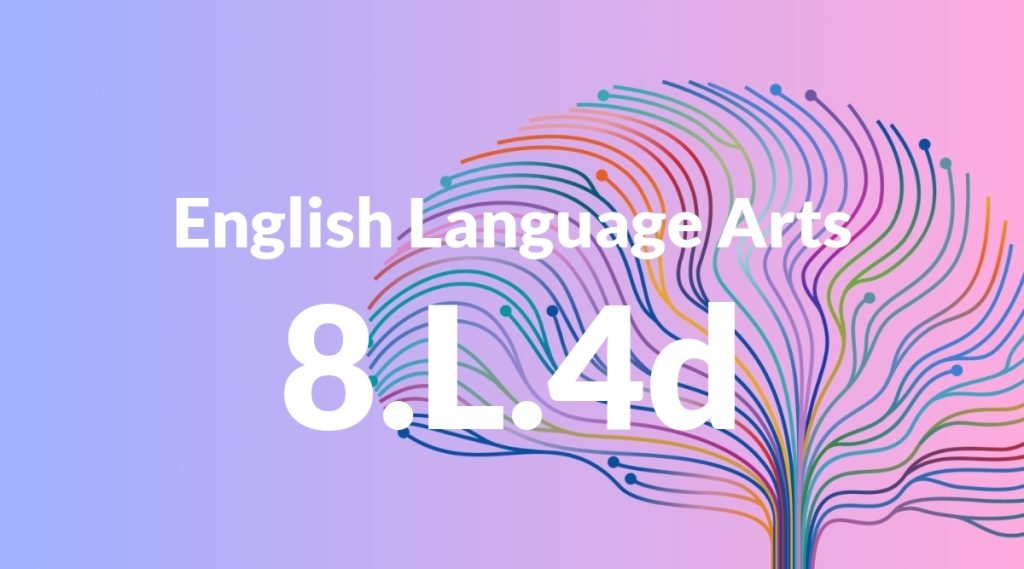Standard: 8.L.4d – Verify the preliminary determination of the meaning of a word or phrase (e.g., by checking the inferred meaning in context or in a dictionary).
Grade level: Grade 8
Subject: English Language Arts
Domain: Language
Teacher Overview
This standard focuses on helping students verify the meaning of words and phrases by using context clues and dictionaries. Mastering this skill is crucial for developing strong reading comprehension and critical thinking abilities. Students should be comfortable using context clues and dictionaries from previous grades.
After mastering this standard, students will be able to understand and interpret complex texts more effectively, enhancing their overall literacy skills.
Common Misconception 1
Some students might think that the first dictionary definition they find is always the correct one. This is incorrect because words often have multiple meanings, and the context determines which meaning is appropriate.
Intervention 1
Encourage students to look at all definitions provided in the dictionary and use the context to decide which one makes the most sense.
Common Misconception 2
Another common misconception is that context clues are always obvious. In reality, context clues can be subtle and require careful analysis.
Intervention 2
Provide students with varied and complex texts to practice identifying and interpreting context clues that are not immediately obvious.
Prerequisite Knowledge
Students should have a basic understanding of how to use context clues and dictionaries to determine word meanings, as well as familiarity with different types of context clues such as synonyms, antonyms, and explanations.
Subsequent Knowledge
Students will develop the ability to discern nuanced meanings of words and phrases in complex texts, enhancing their reading comprehension and analytical skills across various subjects.
Instructional Activities
- Context Clue Scavenger Hunt: Students find and explain context clues in a given text.
- Dictionary Detective: Students use dictionaries to verify word meanings in sentences.
- Word Meaning Match: Students match words to their correct meanings using context clues.
- Context Clue Comics: Students create comic strips that use context clues to reveal word meanings.
- Vocabulary Journals: Students keep journals of new words they encounter, noting context clues and dictionary definitions.




